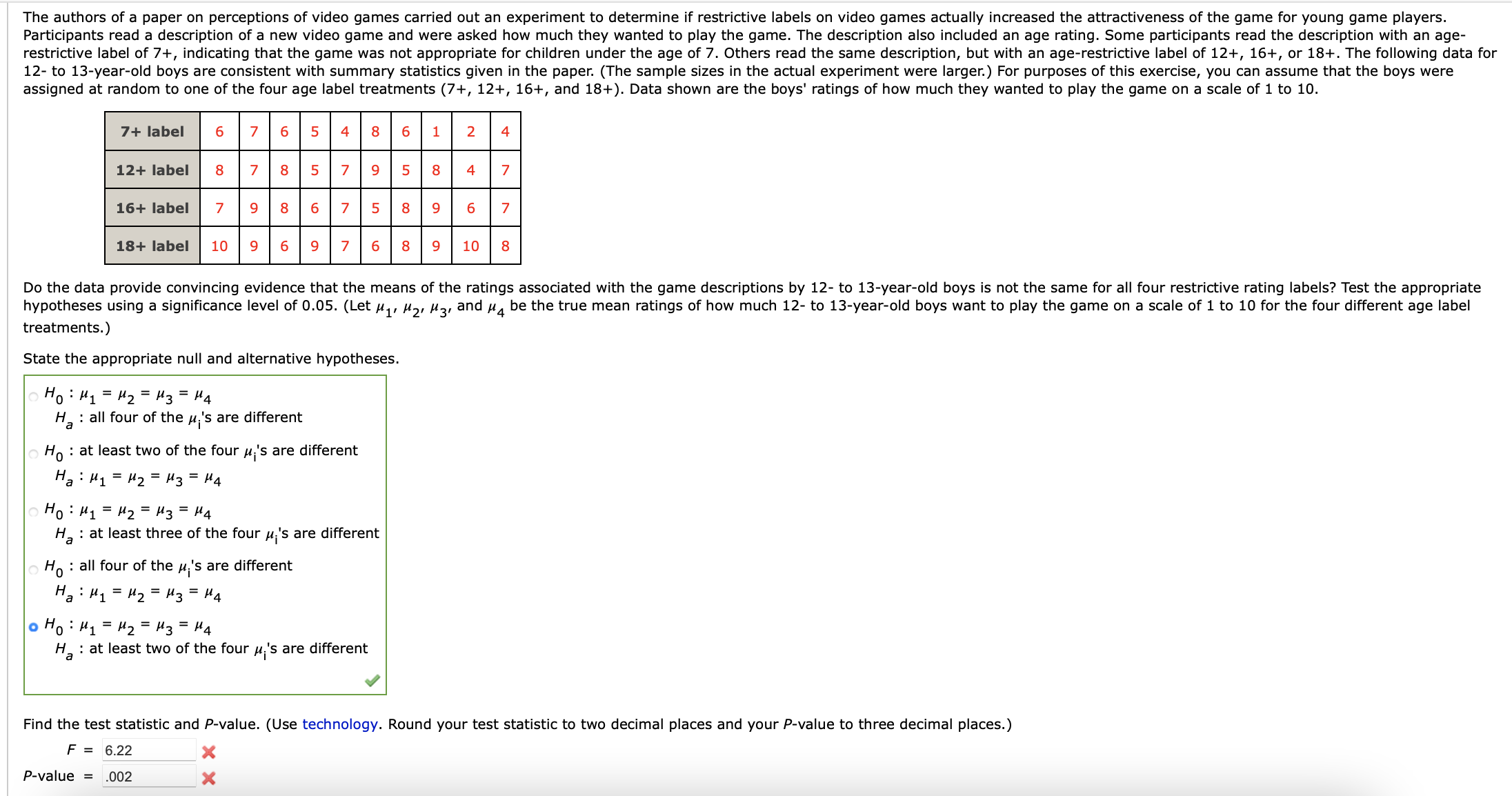Question
The authors of a paper on perceptions of video games carried out an experiment to determine if restrictive labels on video games actually increased the
The authors of a paper on perceptions of video games carried out an experiment to determine if restrictive labels on video games actually increased the attractiveness of the game for young game players. Participants read a description of a new video game and were asked how much they wanted to play the game. The description also included an age rating. Some participants read the description with an age-restrictive label of 7+, indicating that the game was not appropriate for children under the age of 7. Others read the same description, but with an age-restrictive label of 12+, 16+, or 18+. The following data for 12- to 13-year-old boys are consistent with summary statistics given in the paper. (The sample sizes in the actual experiment were larger.) For purposes of this exercise, you can assume that the boys were assigned at random to one of the four age label treatments (7+, 12+, 16+, and 18+). Data shown are the boys' ratings of how much they wanted to play the game on a scale of 1 to 10.
7+ label676548612412+ label878579584716+ label798675896718+ label109697689108
Do the data provide convincing evidence that the means of the ratings associated with the game descriptions by 12- to 13-year-old boys is not the same for all four restrictive rating labels? Test the appropriate hypotheses using a significance level of 0.05. (Let?1,?2,?3, and?4be the true mean ratings of how much 12- to 13-year-old boys want to play the game on a scale of 1 to 10 for the four different age label treatments.)

Step by Step Solution
There are 3 Steps involved in it
Step: 1

Get Instant Access to Expert-Tailored Solutions
See step-by-step solutions with expert insights and AI powered tools for academic success
Step: 2

Step: 3

Ace Your Homework with AI
Get the answers you need in no time with our AI-driven, step-by-step assistance
Get Started


